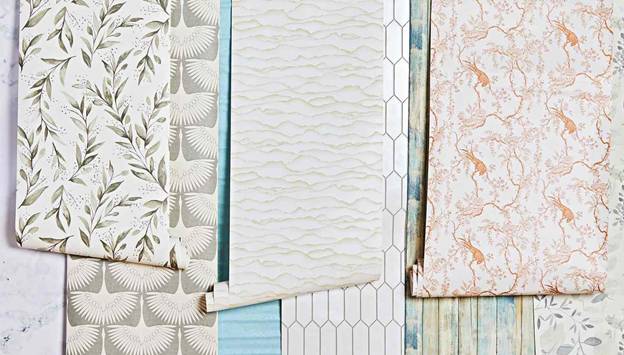I’ve been a tenant for quite a while — we’re talking nearly ten years now — and I’ve detested the walls of every home I’ve been living in. Indeed.
When my wife and I moved into our new home toward the start of the year, I concluded enough was sufficient. Our room was so unimaginably tasteless and exhausting with its yellowy-beige walls that I needed to shout, so I announced we planned to set up a brief wallpaper.
Frankly, I didn’t have any idea what I was getting into. It appeared like a genuinely simple Do-It-Yourself project, yet setting up a brief Fancy Walls peel stick wallpaper isn’t something to do spontaneously.
Here’s the beginning and end I advanced in the meantime, as well as my decision on whether a removable wallpaper is worth the effort.
What Is A Removable Wallpaper?
The removable wallpaper has been very stylish over the last couple of years. As its name suggests, this item is exceptional in its capacity to be effortlessly taken out.
Unlike traditional wallpaper, which requires glue for the installation, temporary wallpaper is more similar to an extra-huge sticker, so it’s simpler to set up and can be brought down with insignificant harm to your walls — no steaming or scratching required.
As you can envision, this trademark makes impermanent wallpaper an ideal answer for tenants like me. It goes up and descends without harming your walls, permitting you to switch around the presence of a room without endangering your security store.
The First Hurdle: Figuring Out How Much You Need
I was quickly sold on the possibility of a brief wallpaper, so I selected the Magnolia Home Willow Peel and Stick Wallpaper from the Magnolia Homes by Joanna Gaines assortment at Home Stop.
Peel-and-stick wallpaper fundamentally implies there’s no glue required — you pull the easing off the wallpaper and slap it on the wall. (This is a ridiculous distortion of things, as you’ll before long see.)
With each roll, you get 34 square feet of wallpaper, so all I needed to do was measure the wall and do some quick math. I thought it was that straightforward; unfortunately, I was highly off-base.
We wanted to wallpaper the wall behind our bed, about 60 square feet, so I requested two rolls of the wallpaper, feeling it would be a bounty. It was not.
Each roll of the wallpaper gives you approximately more than two 8-foot peels (expecting you have 8-foot roofs), and except if you need abnormal even creases in the wall, you’re simply going to get two full peels for every roll.
Each wallpaper peel is 20.5 inches wide, so a superior method for estimating is to partition the length of your wall by 20.5. The partition that number by 2, the number of rolls you need.
We would have required (in any event) two extra moves of paper to cover the wall behind our bed, so we chose to do a more modest wall, all things being equal.
The Main Challenges of Applying Temporary Wallpaper
When we finally got to it, the entire undertaking took around four (perhaps five) hours from beginning to end. All installation involves estimating and cutting the peels, peeling off the sponsorship, arranging it on the wall, and streamlining it, yet it’s undoubtedly quite testing.
I don’t figure you could apply transitory wallpaper alone — you want one individual to hold the highest point of the peel and one more to arrange the base to guarantee it continues without a hitch.
Fortunately, the wallpaper is straightforward to peel off and reposition, assuming you wreck it.
Hanging the Primary Sheet
The main sheet was most certainly the hardest. After we sorted out what worked and didn’t, we could get into a stream, and the ensuing sheets went up much quicker.
For what reason was the primary piece so testing? Most importantly, you’re expected to work left to right across the wall and to begin, and you want to define an upward boundary 20.5 inches away from the corner to direct your most memorable peel.
The thought is that if your wall isn’t completely straight and you use it as a manual for hanging the paper, the print will be slanted as far as possible across the wall. That’s what fundamentally an extra step, while irritating, is significant, assuming you need the best outcomes.

